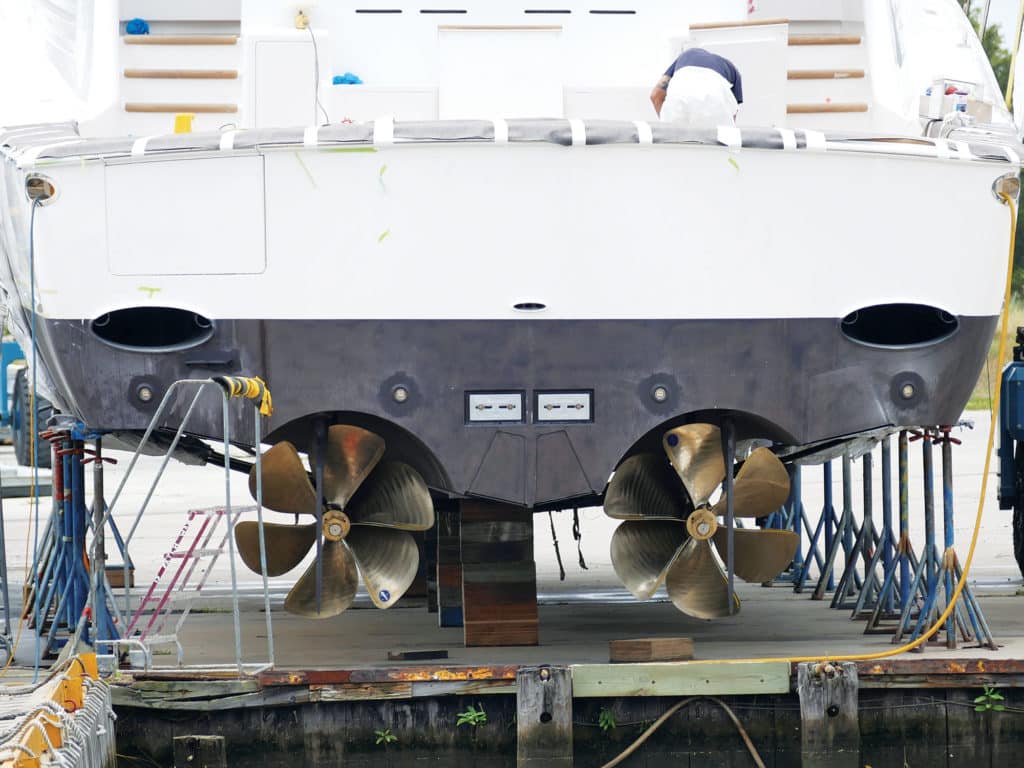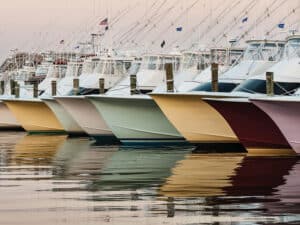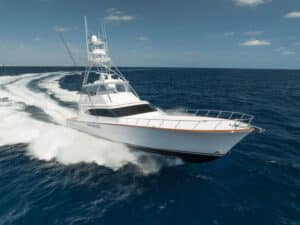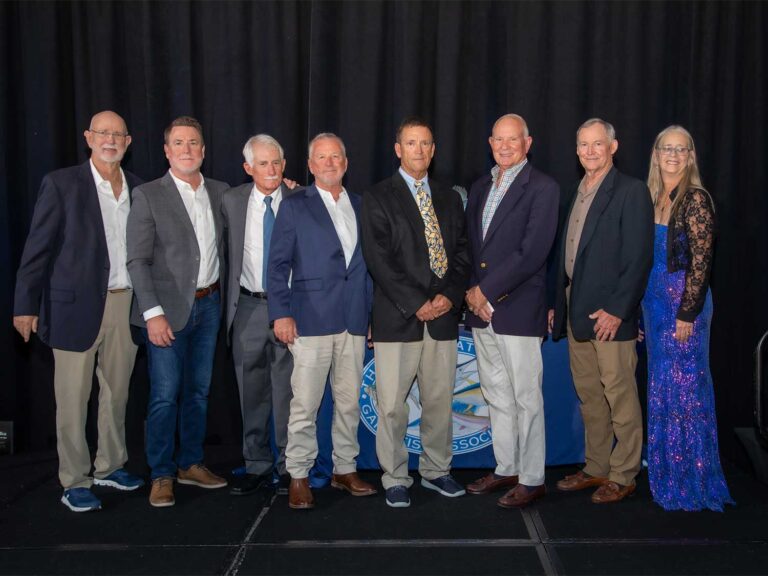
No matter what you read or hear, there is still a fair bit of pseudoscience in propeller selection. Chasing the correct combination of speed and smoothness generated from a propeller can be an expensive exercise, especially with imported wheels that can take months to obtain. However, knowing what not to do is probably the best way to determine a course of action when dialing in the right propellers for your boat.
Considering the similarities among planing-hull designs of sport-fishermen, historical displacement and horsepower information from comparable vessels is the best resource we have for selecting propellers today. Few boats would have a hard time getting close due to the lack of comparable specifications.
Determining Factors
The length and beam of the vessel are two additional factors that need to be taken into consideration when fine-tuning the best propellers for your boat. A boat that is aft-loaded with fuel and equipment and tends to run high in the bow will do better with a slightly different prop from a boat that runs a bit flatter with a more forward center of gravity.
Tunnels or pockets on the hull also affect how a boat runs by decreasing the shaft angle — a positive aspect for increasing efficiency. This is also where a lot of folks talk about the wetted surface area (WSA) argument: The water running across the hull creates extra drag and slows down the boat.
I’ve run enough boats of various sizes to know less WSA does not always make a boat faster. In many cases, it’s just the opposite. Beam, overall length, shaft angle and deadrise contribute to this as well. Many times, when you have two boats with the same power, same weight and only a couple of feet of difference in length, the longer boat is faster. I’m oversimplifying, and I’m sure some engineer somewhere is cringing, but I’ll take him out in real-life conditions with gear on board and prove it almost every time.
Gear Correctly
Further determining the listed duty cycle and revolutions-per-minute limits of the engine for continuous versus intermittent duty and the manufacturer-stated shaft and brake horsepowers are important when deciding on the correct propeller. Gear reduction also plays a big role in how well a boat performs: A deeper gear requires a larger-diameter wheel, which might not be easy to turn but does help with overall smoothness. However, the boat manufacturer should determine the correct gear reduction; poor hole shots and suboptimal top ends result when hulls are not geared correctly.
Shaft diameter also plays a role in the gear you can use. Back in the day, a lot of shafts were wrung off at the wheel after a re-power because the increased horsepower caused too much torque. This could have been remedied by upsizing the running gear or reducing the gear ratio from, say, 1.5-to-1 to 1.75-to-1 or 2-to-1.
At full throttle, the engines need to reach the upper end of the engine revolutions-per-minute range and load percentages, and then determine the midrange and cruising speeds for best range and efficiency.

Pitch and Diameter
Once the gear ratio, horsepower and operating weight are determined, the wheel diameter and pitch can be selected. Choosing a four-, five- or, in some cases, seven-blade wheel will depend on how the boat reacts and the subsequent loads achieved on the engines. On Brier Patch, we started with a pair of five-blade Marlin Series wheels by Michigan Wheel before trying a pair with seven-blades. Surprisingly, the seven-blade propellers were even smoother, with no loss of performance in any area. The number of blades depends on the individual boat; similar boats might have different results.
It is always prudent to work with a top-rated propeller shop to fine-tune the pitch and cup of any wheel. Shops need accurate vessel information, and fudging numbers could adversely affect performance, efficiency and engine health. Getting the right propellers and maintaining them properly will keep you running smoothly and efficiently for many years to come. It all starts with selecting the right propeller, and you might need to try other sets until you get exactly the performance and feel you desire.







